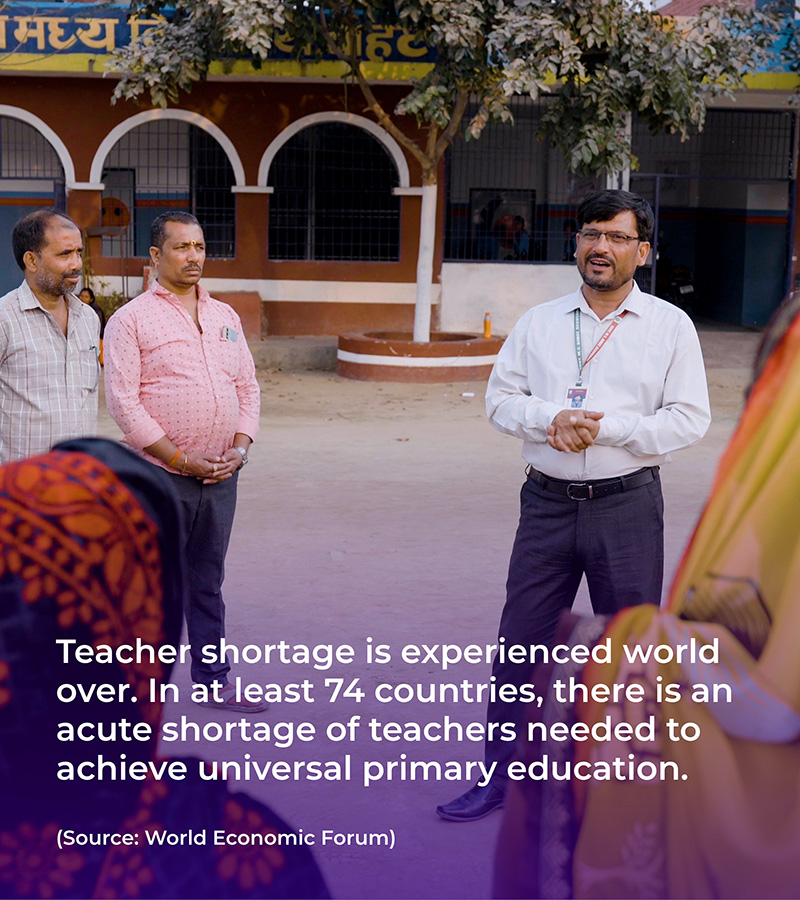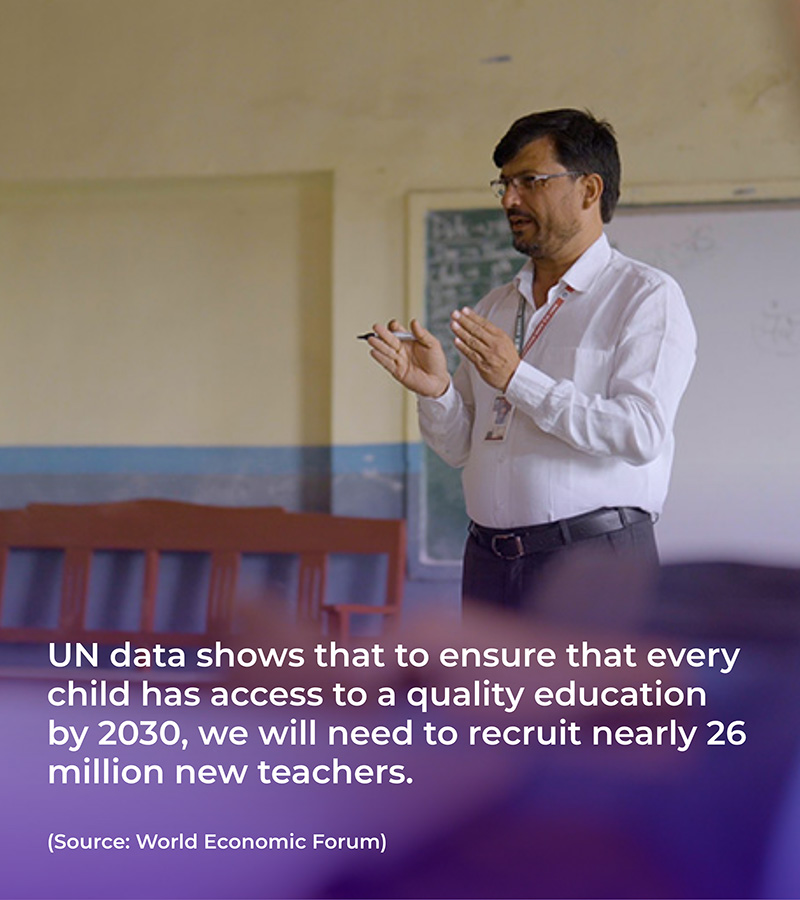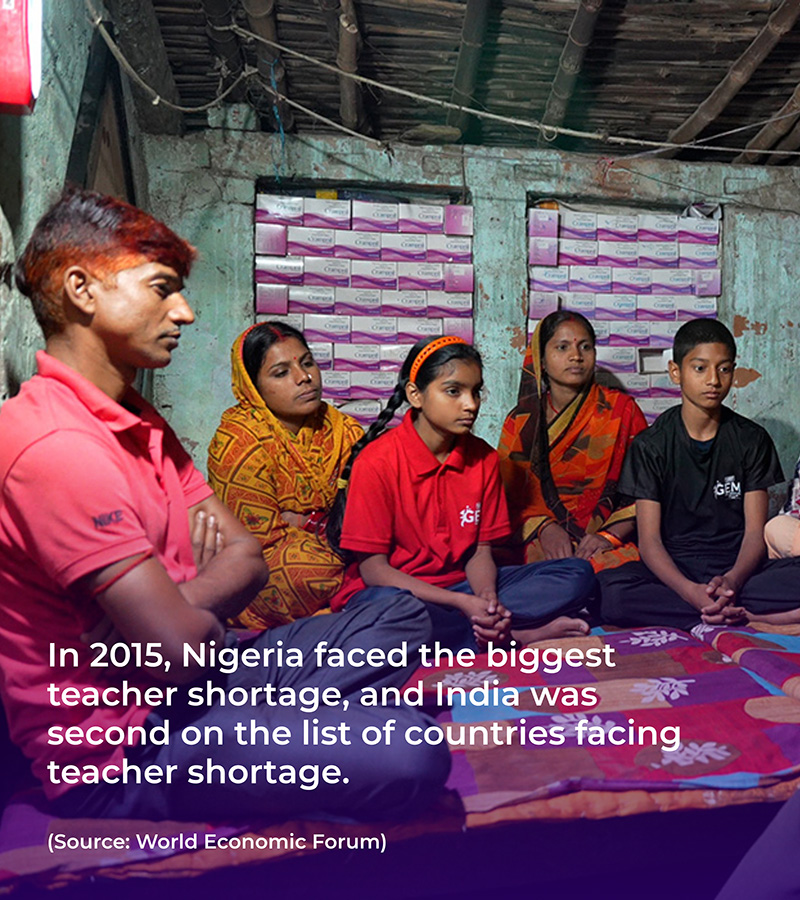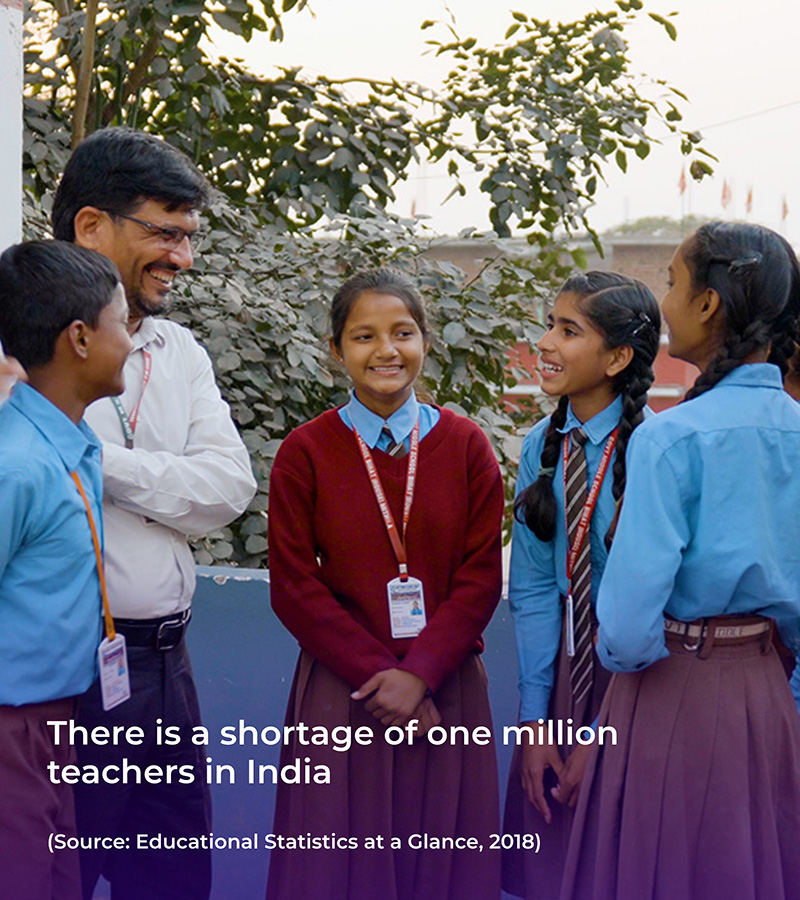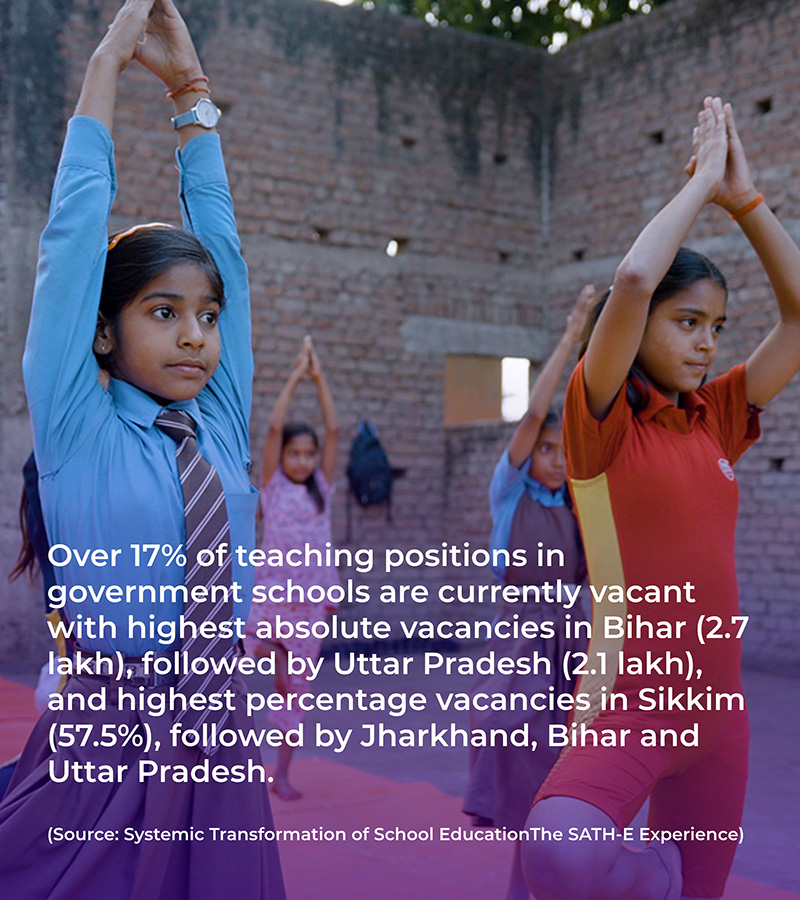When Ranjan Kumar took charge as principal of Rajkiya Middle School (RMS), Bihat (in Begusarai district, Bihar) in May 2016, the building looked like a broken-down structure, not a school. Over the years, RMS had gone from being one of Begusarai district’s finest schools—boasting additional evening classes, a full faculty, and nearly 1800 students—to a hollow shell. Doors had been wrenched off their hinges. Toilets were broken or nonexistent. The classrooms were damaged and falling apart—some being used by outsiders as open toilets. The very rooms where dreams were meant to be nurtured had become symbols of neglect and abandonment.
It was no surprise that on his first day of school, out of 588 enrolled students, barely 118 showed up for the morning assembly.
A crisis deeper than broken classrooms
What was even more troubling than the shattered infrastructure was the acute teacher shortage that worsened over the years. “In 2012, the school had 24-25 teachers,” Ranjan shares. Within a few months, 7-8 teachers got promoted and transferred out, reducing the strength to just 16-17.
When Ranjan joined in 2016, two more teachers left due to personal reasons. Many others spent their time on school administrative tasks, further cutting down the number of teaching staff.
“Enrollment was rising, but the teacher count was falling,” Ranjan says. When Ranjan set upon the school improvement journey, he first met the students to understand their grievances and reasons for poor attendance. Along with the absence of basic infrastructure that made learning difficult, students voiced concerns about the lack of discipline in classrooms.
Next, he met the teachers to hear about their problems. Many teachers expressed that they had a deep desire to devote time to teach their students well and prepare them for their future careers, but were not able to do so because they had to attend to other time-consuming administrative tasks. Ranjan was quick to assure them – “You leave these other tensions to me and focus on reforming the classroom space into one where consistent learning and meaningful engagement can happen”.
But Ranjan’s biggest challenge was yet to come. Even as he worked to improve infrastructure and support his existing teachers, a more pressing crisis was emerging—one that would test his leadership and force him to find innovative solutions.
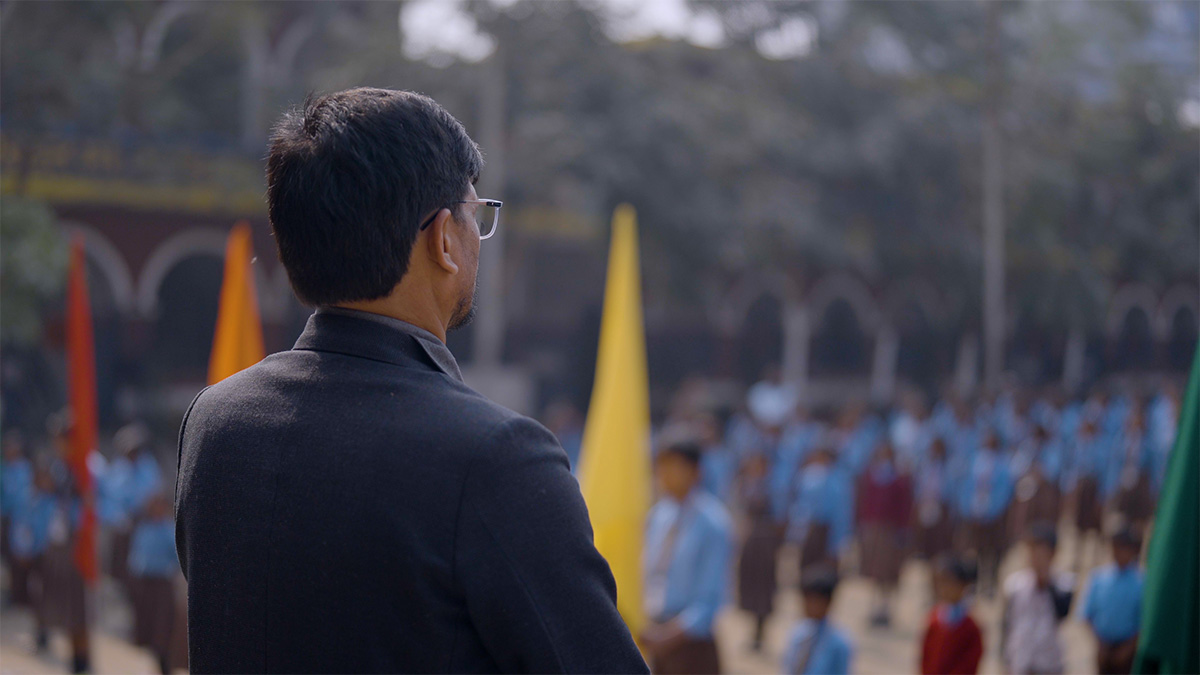
School Improvement Brings Higher Enrollment
In 2017, enrollment in the Rajkiya Middle School increased dramatically by over 200 students. From 588, it reached 795, and eventually crossed 800. This wasn’t by accident—Ranjan had worked systematically, step by step, to transform the school’s appeal.
He transformed the school infrastructure first, giving the dirty, discolored walls new life by painting them in bright, sunny colors so that children felt comfortable in the school environment, making the infrastructure comparable to any private school. He strengthened relationships with students through regular meetings, asking them to spread the word among other children and urging enrolled students to attend regularly. By freeing up teachers to focus on classroom reform rather than administrative burdens, he created an environment where quality education was a norm.
Strategic Infrastructure and Relationship Building
Building on this foundation, he mobilised ₹27.5 lakh through community partnerships and corporate sponsorship (including ₹7.5 lakh from IOCL) to address critical infrastructure deficits, constructing toilets, drinking water facilities, and renovating classrooms. His innovative programs like “Water Bell”(a hydration reminder system that promotes healthy habits), “Gyaan Charcha” (knowledge discussion sessions encouraging peer learning), and “Quizu Babu” (an interactive quiz program making learning fun) made learning interactive, while student-run publications “Kalarav” and “Tunmun” fostered creativity.
The results were remarkable: 169% increase in enrollment, 600% improvement in retention rates, over 580 medals in sports competitions, Bihar Swachh Vidyalaya Puraskar (State Rank 2), National Children’s Climate Award, and recognition as Bihar’s first primary school with a multimedia virtual classroom.
His holistic approach combining infrastructure development, innovative pedagogy, community engagement, and student-centered activities created a sustainable model that earned him the Rajkiya Shikshak Puraskar (State Teacher Award) in 2024, proving that dedicated individual effort can drive transformative educational change even within challenging systemic constraints.
Success creates new challenges: The teacher shortage crisis
But success brought its own challenges. While the demand for teachers grew exponentially due to rising enrollments and improved attendance, the number of teachers remained the same.
Ranjan re-distributed students by grade level to ensure age-appropriate instruction and curriculum — towards effective learning for all students. When he organised students into appropriate sections, the teacher shortage became glaringly obvious.
Ranjan devised a solution for this crisis that eventually turned out to be a win-win for the community.
He recruited recently graduated B.Ed. students looking for employment opportunities. “Under the Right to Education Act, you can’t put unqualified people in classrooms. But there were qualified young people all around us—just waiting for a chance,” he says.
He invited them to volunteer.
“In return, we promised mentorship, classroom experience, and a certificate,” he explains. “It wasn’t just about filling gaps—it was about showing them that teaching is noble work.”
Soon, the classrooms began to come alive again—not just with appointed staff, but with committed youth who brought fresh energy into the school.
A Protest, A Plea, A Satyagraha
But Ranjan knew that recruiting community teachers was not a permanent solution.
While the students’ learning was uninterrupted, Ranjan has sent repeated letters to the Education Department, pleading for appointments since 2017. The last one was dated April 29, 2025. The responses remained slow, but his determination only grew stronger.
Realising that individual voices needed to unite for greater impact, Ranjan reached out to fellow educators across the district.
No political party banners, no noise—just educators demanding quality education for their students.
“We have taken our demand to the streets after 13 long years,” shares Ranjan. Not losing sight of continuously building students’ futures, the protest was planned on a Sunday, not disrupting the students’ learning routine. “We are definitely not anti-government in any form, we just want them to listen to our needs,” he adds.
His voice carries both determination and hope as he reflects on the broader potential of their work.
“Imagine how much we’ve achieved with volunteers,” Ranjan says. “Now imagine what we could do if the government was able to ensure the number of teachers actually needed in classrooms.”
Despite the uncertainty of when their demands will be met, Ranjan and his team continue to nurture hope—not just for systemic change, but for each child who walks through their doors. Their fight for adequate staffing isn’t just about numbers; it’s about unlocking the full potential of every student they serve.
The children at RMS come from families of daily wage workers—vendors, rickshaw pullers, small-scale sellers. To attend the school, they travel from areas 4–5 kilometers away. Their school may not have enough teachers, but it has a leader who refuses to let that decide their future.
Despite all odds, the school now serves nearly 900 students. Its walls are bright, freshly painted. But school improvement is a continuous process. Ranjan knows he cannot fix it by himself, and he will never stop trying. A three-day hunger strike was held on June 2 to draw the government’s attention to teacher shortage.
For Ranjan, Shikshagraha isn’t just about protest. It’s about a deep belief—that every child, no matter where they come from, deserves a classroom with a teacher in it.


